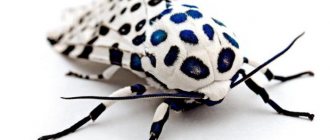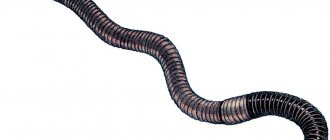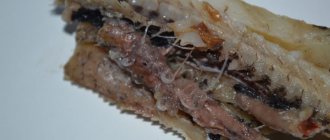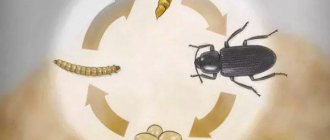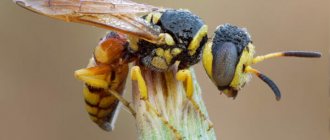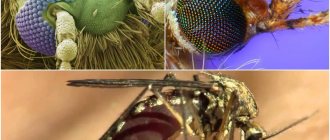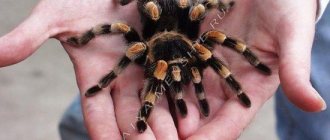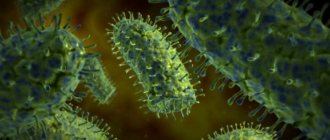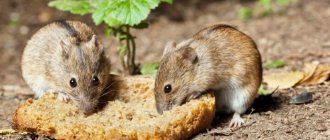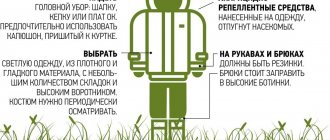Lifestyle of earthworms
If you walk through the garden in the morning or after rain, then, as a rule, you can see small piles of soil thrown out by worms on the ground, and in the puddles you can see them themselves. Due to the fact that these individuals crawl to the surface of the earth after rain, this name was assigned to them. (the photo above shows this invertebrate animal) also crawls onto the earth's surface at night. As a rule, it prefers soil rich in humus, so it is rarely found in sandstones. The earthworm does not like swampy soils. These features are explained by the physiological characteristics of Lumbricidae. The fact is that worms breathe over the entire surface of their body, which is covered with a mucous epidermis. There is too little air dissolved in soil saturated with moisture. As a result, the earthworm suffocates there. By the way, this explains his behavior during the rain. Dry soil is also detrimental to representatives of Haplotaxida: their skin dries out and breathing stops. In wet and warm weather, earthworms (the photo below shows Lumbricidae in all its “glory”) stay closer to the surface of the earth. With a decrease in temperature, as well as with the onset of a dry period, they crawl into the deeper layers of the soil.
Features and habitat of earthworms
These creatures are considered to be oligochaete worms. The body of an earthworm has a wide variety of lengths. It stretches from 2 cm to 3 m. There are from 80 to 300 segments. The structure of the earthworm is unique and interesting.
They move with the help of short bristles. They are on every segment. The only exception is the anterior ones, which have no bristles. The number of bristles is also not unambiguous, there are eight or more of them, the number reaches several dozen. Worms from the tropics have a larger number of bristles.
As for the circulatory system of earthworms, it is closed and well developed. Their blood color is red. These creatures breathe thanks to the sensitivity of their skin cells.
The skin, in turn, has a special protective mucus. Their sensitive recipes are completely undeveloped. They have no organs of vision at all. Instead, there are special cells on the skin that react to light.
In the same places there are taste buds, smell and touch. Worms have a well-developed ability to regenerate. They can easily recover their backside after damage.
The large family of worms that we are currently talking about includes about 200 species. There are two types of earthworms. They have distinctive features. It all depends on lifestyle and biological characteristics. The first category includes earthworms that find food for themselves in the ground. The latter get their food from it.
Worms that get their food underground are called litter worms and are found under the soil no deeper than 10 cm and do not go deeper even when the soil freezes or dries out.
Soil worms are another category of worms. These creatures can sink a little deeper than the previous ones, by 20 cm. For burrowing worms that feed under the soil, the maximum depth starts from 1 meter and deeper.
Burrow worms are generally difficult to notice on the surface. They almost never appear there. Even during mating or feeding, they do not completely protrude from their burrows.
The life of a burrowing earthworm, from beginning to end, passes deep underground in agricultural work. Earthworms can be found everywhere, except in cold arctic places.
Burrowing and bedding worms are comfortable in waterlogged soils. They are found on the banks of reservoirs, in swampy areas and in subtropical zones with a humid climate. The taiga and tundra are loved by litter and soil-litter worms.
READ ALSO: Garden and vegetable garden from A to Z
And the soil is best grown in steppe chernozems. They can adapt in all places, but earthworms feel most comfortable in the soil of coniferous-broad-leaved forests. In the summer they live closer to the surface of the earth, and in the winter they descend deeper.
earthworms
Adults reach 30 centimeters in length, although there are some larger specimens. The body of an earthworm is slippery, smooth, has a cylindrical shape, and consists of segments - piece rings. This constitution is explained by the way of life of Lumbricidae: such a structure facilitates the process of movement in the soil. The number of piecework rings reaches two hundred. The surface of the body, which could conventionally be called the back, is convex, the abdominal surface is flat and lighter. On the earthworm's body, where its front part ends, there is a thickening called the girdle. It contains special glands that secrete a sticky liquid. During reproduction, an egg cocoon is formed from the girdle, and eggs develop in it.
The structure of earthworms
The structure of earthworms is quite simple. The length of individuals that are common in Russia varies from 2 to 30 centimeters. The entire body is divided into segments, there can be from 80 to 300. The earthworm moves with the help of very small bristles, which are located on each segment of the body, with the exception of the very first. There can be from 8 to 20 setae on one segment.
In the attached picture you can visually observe the structure of the worm. You can determine the front part of the worm, where the mouth is, and the back part, where the anus is located. You can also notice segments.
Earthworms are characterized by a closed circulatory system, which is quite well developed. It includes one artery and one vein. The worm breathes thanks to very sensitive skin cells. The skin contains protective mucus, which contains a large number of antiseptic enzymes. The brain is poorly developed. It consists of only two nerve ganglia. It is very common for worms to exhibit the ability to regenerate. For example, if you cut off his tail, after a while it will grow back.
The structure of an earthworm
Earthworms are hermaphrodites, each having both male and female reproductive organs. Reproduction occurs through the mating of two individuals. The genital organ of worms is a girdle; in size it occupies several anterior segments. The genital girdle is clearly visible on the body of the worm; it looks like a thickening. In this organ, the cocoon matures, from which small worms hatch after 2-3 weeks.
How do earthworms move?
Representatives of Haplotaxida crawl. First, they extend the front end of their body and cling to uneven ground surfaces with special bristles, which are located on the ventral side of the rings. After this, the muscles contract, and the back one is pulled forward. The movement of a worm in the ground is characterized by the fact that it makes passages in the soil. At the same time, with the pointed end of its body, it pushes the earth apart, and then squeezes between its particles. It is also interesting how earthworms move in denser layers. As they move, they swallow soil and pass it through their intestines. Worms, as a rule, swallow soil at a considerable depth, and throw it out through the anus already at the top, near their own burrow. It can often be observed in the summer on the surface of the earth in the form of lumps and elongated “laces”.
What environment do earthworms live in?
During the daytime, worms prefer to stay in the soil of the swarm, with passages in it. Light soil, the worm drills with its front tip. To do this, he first compresses the front part so that it becomes thinner, and tries to push it forward between the soil lumps. Subsequently, the front tip becomes thicker, the lumps move apart, and the worm pulls up the back part. In hard soil, raincoats make passages for themselves, passing them through the intestinal tract. Earthen heaps are often visible on the surface of the earth - these are traces of the night activity of worms. They emerge from their burrows after heavy rainfall (that’s why they are called rainfall). In the summer, worms prefer to stay in the upper layers of the soil, and in the winter, to escape the cold, they dig holes, the depth of which can be more than two meters.
Earthworm and its biology
Worms have well-developed muscles, which make this method of movement possible. Their muscles are located under the epidermis; in fact, they, together with the skin, form a kind of musculocutaneous sac. The muscles are located in two layers. Directly below the epidermis are the circular muscles, and below them is a second, thicker longitudinal layer (consisting of long contractile fibers). When the longitudinal muscles are compressed, the earthworm's body becomes thicker and shorter. When contracting the circular muscles, on the contrary, it is long and thin. The alternate contraction of both layers of muscles, carried out under the influence of the nervous system branching in the muscle tissue, determines the movement of Lumbricidae.
The movement of worms is greatly facilitated by the presence of small bristles on the lower part of the body. They can be felt if you run a wet finger along the abdomen of the worm from the rear to the anterior end. Thanks to these bristles, earthworms not only move in the soil, but also “grab” the ground when they are tried to be pulled out. They also help to rise and fall along already made earthen passages. With this, we will finish dealing with the question of how earthworms move, and move on to no less interesting facts about the life of Lumbricidae.
Circulatory system
It consists of two longitudinal vessels - abdominal and dorsal, as well as branches connecting them. Due to muscle contraction of the walls, blood moves throughout the body. The blood of earthworms is scarlet. With its help, communication is established between internal organs, and metabolism is also carried out. As the blood circulates, it carries nutritional compounds from the digestive organs, as well as oxygen coming from the skin. At the same time, carbon dioxide is removed from the tissues. In addition, the blood removes unnecessary and harmful compounds to the excretory organs.
Virtual laboratory work
Body cavity.
As we already know, the earthworm is a three-layered animal.
Its body consists essentially of two tubes nested inside one another. The outer tube represents the wall of the body, and the inner tube represents the wall of the digestive tract. The body cavity, lined from the inside with a layer of cells
, is located between them. In the cavity fluid (it gives the body elasticity) there are internal organs.
Digestive system.
The digestive tract begins with the mouth, followed by the pharynx, esophagus, crop, stomach, intestines and anus.
Circulatory system.
The circulatory system is designed to move oxygen, carbon dioxide, nutrients and other substances within the body.
In an earthworm, blood does not flow freely into the body cavity, but moves only inside the vessels. Such a circulatory system is called closed
.
The circulatory system consists of two main vessels
: dorsal and abdominal.
Blood flows forward through the spinal cord, and backward through the abdominal tract. In the region of the esophagus, these vessels are connected by ring vessels called “hearts”. They have muscular walls, with the help of which they pump blood
into the abdominal vessel. Small blood vessels extend to all organs and to the walls of the body.
Respiratory system.
The earthworm has no respiratory organs. Breathing occurs through moist skin riddled with blood vessels.
Respiratory system.
The earthworm has no respiratory organs. Breathing occurs through moist skin riddled with blood vessels.
Excretory system.
The excretory system is represented by paired organs (excretory tubes) located in each segment of the body. With the help of the excretory system, the body removes excess water and other substances.
Nervous system.
The nervous system consists of a peripharyngeal nerve ring and a ventral nerve cord with thickenings in each segment from which nerves arise. The peripharyngeal ring consists of the suprapharyngeal and subpharyngeal nerve nodes, connected by an annular bridge. There are no special sense organs, but sensitive cells in the skin allow the earthworm to sense touch and distinguish light from dark. The excitation that arises in these cells is transmitted along nerve fibers to the nearest nerve node, and from there along other nerve fibers to the muscles, which causes their contraction. Thus, the nervous system carries out the body's response to irritation (reflex).
Irritation of earthworms
Earthworms do not have any special features. They perceive external irritations thanks to the nervous system. Worms have a highly developed sense of touch. The nerve cells responsible for this are located over the entire surface of the skin. The sensitivity of earthworms is so great that the slightest vibrations in the soil force them to hide in burrows or in deeper layers of the earth as quickly as possible. However, the importance of sensitive nerve endings is not limited only to the function of touch. Scientists have found that with the help of these cells, earthworms are able to sense rays of light. So, if you direct a flashlight beam at a worm at night, it will quickly disappear into a safe place.
The response of animals to any irritation, carried out thanks to the nervous system, is called a reflex. It is customary to distinguish between different types of reflexes. Thus, the contraction of the earthworm's body when touched, as well as its movement under sudden illumination, is a protective function. This is a protective reflex. Experiments by scientists have shown that earthworms can smell. They use their sense of smell to find food.
Reproduction
Earthworms reproduce sexually, although in general protostomes are hermaphrodites. Each member of Haplotaxida has male organs called testes (which produce sperm) and female organs called ovaries (which produce eggs). The earthworm lays its eggs in a slimy cocoon. It is formed from a substance that is released through the belt. Next, the cocoon in the form of a muff slides off the body and is pulled together at the ends. It remains in the ground until the young worms emerge from it. The cocoon serves to protect eggs from dampness and other unfavorable influences.
Earthworm nutrition
This is a spineless omnivore. Earthworm organs
are designed so that they can swallow huge amounts of soil. Along with this, rotten leaves are used, everything except hard ones that smell unpleasant to the worm, as well as fresh plants.
The figure shows the structure of an earthworm
They drag all this food underground and begin to eat there. They do not like the leaf veins; the worms only eat the soft part of the leaf. It is known that earthworms are thrifty creatures.
They store leaves in their burrows as reserves, neatly folding them. Moreover, they may have a special hole dug for storing provisions. They fill the hole with food and cover it with a lump of earth. They do not visit their storage until necessary.
What are worms for?
This section will be useful for those who think that earthworms are only needed for fishing. Of course, a fisherman has nothing to do on the river without them, but this is not all the benefit from representatives of Lumbricidae. The role of the earthworm in nature is so great that it cannot be overestimated. They promote the decomposition of organic matter in the soil. In addition, earthworms enrich the earth with the most valuable fertilizer - humus. They are also a kind of indicator: if the soil contains a lot of worms, it means it is fertile.
A full understanding of the role of Haplotaxida came to humanity relatively recently. However, even now many farmers prefer to use chemical fertilizers, despite the fact that they kill all living things. Today, an alternative to chemicals has been found - vermicompost and vermicompost. In fact, this is a magic wand for the earth, because they contain a large amount of phosphorus, potassium, nitrogen, that is, precisely those substances that are vital for plants to grow fully.
Project “Underground inhabitants - earthworms”
Tatiana Popovich
Project “Underground inhabitants - earthworms”
The purpose and objectives of the research work.
Target:
Expand your understanding of earthworms , learn to treat them with care.
Tasks:
• Collect information on this topic from various sources;
• Find out whether earthworms have sensory organs ;
• Study the characteristics of earthworms and their role in soil formation;
• Analyze the results obtained and draw conclusions.
The object of the research work is the earthworm .
The subject of the study is the role and significance of the earthworm in nature .
Research paper hypothesis.
My research hypothesis:
If there are no earthworms , the plants will die.
Methods and means involved in the work.
Research methods:
• Collecting information on the topic from books /encyclopedia/, TV channel “Living Planet”
, on the Internet;
• Experiments /experiments/: a worm need oxygen ?”
,
"What does an earthworm ?"
.
• Observations of earthworms .
• Draw diagrams of my experiments.
• Make a laptop on the topic with the guys in the group.
Facilities:
• Earthworm , cotton swabs, liquid with a pungent odor (acetone, jar of soil, water, tray, magnifying glass.
• Camera, video camera, encyclopedias, TV, computer.
• Cardboard, scissors, glue, colored paper, pictures, drawings.
Result.
My conclusions
After all the observations and experiments, I know the exact answer, the absence of earthworms in the soil will lead to the fact that the soil will not be fertile and the plants will die, which means we will have nothing to eat. Earthworms play a big role in nature, so they need our protection.
1 slide
Hello, my name is Sveta Foss,
I am 6 years old, I go to a pre-school group
kindergarten No. 10.
The topic of my speech: “Our friends are the underground inhabitants of earthworms ”
.
2 slide
In the summer, after the rain, we went for a walk with the children and saw a lot of earthworms . We became very interested: why are there so many worms on the asphalt ? We started collecting them. And Tatyana Arkadyevna said that they are alive and feel everything, and most importantly they are useful, then we put them in the flowerbed. I wondered what they could feel and what benefits such small worms , while all I know is that they are eaten by birds, hedgehogs and moles.
3 slide
My research hypothesis: if there are no earthworms , the plants will die.
4 slide
I wanted to learn more about earthworms .
5 slide
From the encyclopedia and television on the Living Planet
, I learned that
earthworms live all over the planet, in every corner of the world except Antarctica. Their body length can be from 1 centimeter to 3 meters. The entire body of an earthworm is divided by ring constrictions into many segments with small bristles, with the help of which it moves. Its body is covered with mucus, it helps it move underground, and the earthworm breathes .
We all breathe, we need oxygen. But worms are also alive , which means they also breathe.
6 slide
To check this, we conducted an experiment with my mother: does a worm ?
Slide 7 I placed it in a jar of soil and began to water it. When the jar was filled with water, the worm crawled to the surface. Yeah, so that's why worms crawl up when it rains . can't breathe underground when . holes are filled with water , and they crawl to the surface to breathe.
Slide 8 Conclusion: a worm needs oxygen to breathe.
Slide 9 But I couldn’t wait to find out what an earthworm ?
10 slide (MOVIE No. 1)
Mom filmed this experience in the summer, because there are no worms .
11 slide (MOVIE No. 2)
I took the earthworm and put it on a tray, brought a cotton swab dipped in acetone to its body on one side, the worm reacted sharply , when I brought it from the other side, it also reacted.
12 slide
That's how I found out that the worm is alive , breathing,
Slide 13
moves around, smells strong odors.
Slide 14 I concluded: earthworms react to strong odors.
15 slide
What benefits does an earthworm ? In the spring, when Tatyana Arkadyevna and I were planting seedlings in the garden, I noticed that the soil in the beds was loose and soft. I asked why? They explained to me that earthworms , which throughout the summer help us loosen the soil and at the same time fertilize it. When a worm digs a hole , it loosens it and releases oxygen into the ground. And when he eats rotten plants underground, he passes them through himself and brings them out, thereby fertilizing the soil. So this is what benefits earthworms !
16 slide
Conclusion: earthworms loosen and fertilize the soil.
Such small earthworms are angels - the guardians of all life on earth, although they live underground.
From my mother’s stories, I learned that people began to use mineral fertilizers in fields and vegetable gardens, because of which earthworms . I wondered if earthworms end up in the Red Book in the future?
After all the observations and experiments, I know the exact answer, the absence of earthworms in the soil will lead to the fact that the soil will not be fertile and the plants will die, which means we will have nothing to eat. Earthworms play a big role in nature, so they need our protection.
17 +18 slide
I shared my observations with the guys in the group. Everyone was very interested.
Slide 19
And the guys and I made this laptop about an earthworm . It turned out just great! From the Internet I learned that earthworms are used to make medicine. This is another secret for me that I will have to find out.
Internal structure
A characteristic feature of the internal structure is that earthworms have developed real tissues. The outside of the body is covered with a layer of ectoderm, the cells of which form the integumentary tissue. The skin epithelium is rich in mucous glandular cells.
Muscles
Under the cells of the skin epithelium there is a well-developed muscle, consisting of a layer of circular muscles and a more powerful layer of longitudinal muscles located under it. Powerful longitudinal and circular muscles change the shape of each segment separately.
The earthworm alternately compresses and lengthens them, then expands and shortens them. Wave-like contractions of the body allow not only crawling through the burrow, but also pushing the soil apart, expanding the movement.
Digestive system
The digestive system begins at the front end of the body with the mouth opening, from which food enters sequentially into the pharynx and esophagus (in earthworms, three pairs of calcareous glands flow into it, the lime coming from them into the esophagus serves to neutralize the acids of rotting leaves on which the animals feed). Then the food passes into the enlarged crop and a small muscular stomach (the muscles in its walls help grind the food).
The midgut stretches from the stomach almost to the posterior end of the body, in which, under the action of enzymes, food is digested and absorbed. Undigested remains enter the short hindgut and are thrown out through the anus. Earthworms feed on half-rotted plant remains, which they swallow along with the soil. As it passes through the intestines, the soil mixes well with organic matter. Earthworm excrement contains five times more nitrogen, seven times more phosphorus and eleven times more potassium than regular soil.
Circulatory system
The circulatory system is closed and consists of blood vessels. The dorsal vessel stretches along the entire body above the intestines, and below it is the abdominal vessel.
In each segment they are united by a ring vessel. In the anterior segments, some annular vessels are thickened, their walls contract and pulsate rhythmically, thanks to which blood is driven from the dorsal vessel to the abdominal one.
The red color of blood is due to the presence of hemoglobin in the plasma. It plays the same role as in humans - nutrients dissolved in the blood are distributed throughout the body.
Breath
Most annelids, including earthworms, are characterized by cutaneous respiration; almost all gas exchange is provided by the surface of the body, therefore the worms are very sensitive to moist soil and are not found in dry sandy soils, where their skin quickly dries out, and after rains, when in the soil a lot of water, crawling to the surface.
Nervous system
In the anterior segment of the worm there is a peripharyngeal ring - the largest accumulation of nerve cells. The abdominal nerve cord with nodes of nerve cells in each segment begins with it.
This nodular type nervous system was formed by the fusion of nerve cords on the right and left sides of the body. It ensures the independence of the joints and the coordinated functioning of all organs.
Excretory organs
The excretory organs look like thin, loop-shaped, curved tubes, which open at one end into the body cavity and at the other outside. New, simpler funnel-shaped excretory organs - metanephridia - remove harmful substances into the external environment as they accumulate.
Reproduction and development
Reproduction occurs only sexually. Earthworms are hermaphrodites. Their reproductive system is located in several segments of the anterior part. The testes lie in front of the ovaries. When mating, the sperm of each of the two worms is transferred to the seminal receptacles (special cavities) of the other. Cross fertilization of worms.
During copulation (mating) and oviposition, girdle cells on the 32-37 segment secrete mucus, which serves to form an egg cocoon, and a protein liquid to nourish the developing embryo. The secretions of the girdle form a kind of mucous coupling (1).
The worm crawls out of it with its back end first, laying eggs in the mucus. The edges of the coupling stick together and a cocoon is formed, which remains in the earthen hole (2). Embryonic development of eggs occurs in a cocoon, from which young worms emerge (3).
Sense organs
The sense organs are very poorly developed. The earthworm does not have real organs of vision; their role is played by individual light-sensitive cells located in the skin. The receptors for touch, taste, and smell are also located there. Earthworms are capable of regeneration (easily restore the back part).
Internal structure of an earthworm
Representatives of this type of living organisms have a developed internal structure with a muscular, circulatory and respiratory system.
Muscles
The musculature of earthworms is arranged according to the following principle:
- Under a thin layer of epithelial membrane there is a circular and longitudinal layer of muscle tissue.
- The synchronized work of different types of muscles changes the shape of individual segments of the worm's body.
- Alternate spasms of the longitudinal and circular muscles cause the living organism to move by expanding and contracting the joints.
The speed of movement of the animal depends on its age, the number of bristles and individual body segments. Adult sexually mature individuals move 3 times faster than young worms.
Digestive system of an earthworm
In terms of the organization of their digestive function, these animals have a cross-cutting type of nutrition. It looks like this:
- Food is captured by the oral cavity.
- It is pushed into the pharyngeal cavity by longitudinal muscles.
- From the pharynx, food moves into the esophagus.
- Under the influence of nutrients, the esophagus expands multiple times, transforming into a voluminous goiter.
- Food is dosed into the stomach, where it is mixed, ground to a pulp using circular and longitudinal muscles, and then the process of partial digestion begins.
Earthworms appear to be primitive organisms, but the organization of their digestive system suggests otherwise.
Excretory organs of the earthworm
The excretory system of earthworms has an even more complex organization than the organs of the digestive tract. This part of the animal body is equipped with special organs - nephridia, which are located in pairs in each segment of the body (except for the first three and the last). The waste products of these individuals enter the environment in the form of liquid.
Waste from processed food is directed by cilia to the nephrostomy. This is the excretory organ of the earthworm, which performs an intermediate function. From the nephrostomy, waste products are directed through the internal septum through a special tube. This part of the animal’s body forms a complex of loop connections that are intertwined by tiny capillaries. From the nephrostomy canals, food waste is expelled by the worm's body through the pores.
Earthworm circulatory system
A detailed description of the structure of the circulatory system of individuals of this species is as follows:
- Closed-type blood supply system.
- Blood is a standard red color.
- The circulatory cycle is represented by 2 main vessels - dorsal and abdominal. Through the first channel, blood is directed from the posterior segment of the body to its anterior part. In the abdominal vessel, blood moves in the opposite direction.
- The main canals are interconnected by annular vessels, which are also called “hearts”.
- During contraction of the annular channels, blood is pumped to create intravascular pressure.
The earthworm's body is enveloped in a network of small capillaries that supply epithelial and muscle tissue with nutrients.
Breath
The process of gas exchange is carried out through special cells located in the epidermal membrane of the body. In conditions of high soil moisture, the worm is deprived of the opportunity to carry out full respiration. In this regard, when it rains, animals crawl out to the surface of the earth en masse.
Nervous system of an earthworm
The structure of the nervous system of these individuals is such that it is represented by two nerve nodes in the form of a brain, as well as peripheral branches in the form of an abdominal chain. Due to this organ, the earthworm reacts with lightning speed to touches on the body. Animals of this type have the ability to regenerate lost segments.
Sense organs
The table below describes the sensory organs of earthworms.
| Types of sense organs | Characteristic |
| Epidermal receptors | Located under the layer of the upper epidermal membrane of the body. They are responsible for identifying chemical substances and also determining changes in the temperature regime of the environment. |
| Taste buds | They are found only within the epithelial structure of the buccal chamber. Recognize food captured in the oral cavity. Able to distinguish between chemicals. |
| Light receptors | Earthworms have no eyes. The visual function is replaced by light-sensitive cells. Light receptors are located on different parts of the epidermis, which allows the animal to distinguish any changes in terms of environmental illumination. |
Germ layers
The germ layers are the basis of all organs. In annelids, the ectoderm (outer layer of cells), endoderm (inner layer of cells) and mesoderm (intermediate layer of cells) appear early in development as three germ layers. They give rise to all major organ systems, including the secondary cavity and the circulatory system.
These same organ systems are subsequently preserved in all higher animals, and they are formed from the same three germ layers. Thus, higher animals in their development repeat the evolutionary development of their ancestors.
Earthworm
belongs to the group of annelids. It does not have any special organs specifically designed for gas exchange, and gas exchange occurs by diffusion across the entire surface of the body. In essence, they do not need specialized organs, since, due to the cylindrical shape of the body, their surface area to volume ratio is large, and with their relatively low activity, they do not consume much oxygen.
However, in annelids
there is a circulatory system (unlike some simpler animals and single-celled organisms), and the respiratory pigment hemoglobin is dissolved in their blood. Contractions of large blood vessels drive blood along with gases dissolved in it throughout the body; this also contributes to the maintenance of steep diffusion gradients.
Thin skin of an earthworm
(cuticle) is constantly moistened by the secretion of the glands located in the epithelium.
Capillaries are located in the epithelium directly under the cuticle. The distance between the blood vessels and the surface of the body is small and this ensures rapid diffusion of oxygen into the blood. Earthworms are practically not protected from drying out and therefore try to stay only in a humid environment. A. Tracheal system in locusts. B. The structure of the insect trachea.
Respiratory system of insects - locusts.
Gas exchange in insects
carried out through a system of tubes, the so-called trachea. This system allows oxygen to flow from the air directly to the tissues and there is no need for its transportation by blood. This is a much faster method than diffusion of dissolved oxygen through tissue; Such gas exchange creates conditions for high metabolic rate.
Spiracles
— paired openings located on the second and third thoracic and on the first eight abdominal segments of the insect’s body lead to air cavities. Branched tubes - tracheas - extend from these cavities. Each trachea is lined by an epithelium that secretes a thin layer of chitinous material. Typically, this rigid layer is further reinforced by spiral and annular thickenings, due to which the airways remain open even if the pressure in the lumen of the trachea is negative (compare with the cartilaginous rings in the human trachea and bronchi). At each body segment, the trachea branches into numerous smaller tubes called tracheoles; tracheoles also branch, penetrating the tissues of the insect, and in the most active tissues, for example in the flight muscles, they end blindly inside individual cells. The degree of branching of tracheoles can vary depending on the metabolic needs of the tissues.
Tracheoles have chitinous lining
absent. At rest they are filled with watery fluid; at this time, oxygen diffuses through them to the tissues (and CO 2 in the opposite direction) at a speed quite sufficient to satisfy the needs of the insect. In the active state, increased metabolic activity of the muscles leads to the accumulation of certain metabolites, in particular lactic acid, and the osmotic pressure in the tissues increases accordingly. When this happens, the fluid from the tracheoles, under the influence of osmotic forces, is partially absorbed into the tissues, and more air enters the tracheoles, and therefore more oxygen, and this oxygen is supplied directly to the tissues just when they need it.
Conditions created in insect tissues at rest and in an active state (work of tracheoles).
The overall flow of air passing through the insect's body is regulated by a mechanism that closes the spiracles
. The opening of each spiracle is equipped with a system of valves controlled by very small muscles. The edges of this opening are covered with hairs, which prevent foreign particles from entering the spiracles and prevent excessive loss of moisture. The size of the hole is adjusted depending on the amount of CO 2 in the insect’s body.
Increased activity leads to increased formation of CO 2. Chemoreceptors
they catch this and the spiracles open. The same stimulus can also cause ventilatory movements of the body, especially in large insects such as locusts. The dorsoventral muscles, contracting, make the insect's body flatter, as a result of which the volume of the tracheal system decreases and air is pushed out of it (“exhalation”). Air absorption (“inhalation”) occurs passively when the body segments, due to their elasticity, return to their original shape.
Judging by some data, the thoracic and abdominal spiracles
open and close alternately, and this, combined with the ventilation movements of the body, creates a unidirectional flow of air that enters the insect's body through the thoracic region and exits through the abdominal region.
Tracheal system
, of course, is very effective in terms of gas exchange, however, it should be borne in mind that gas exchange in most insects is determined exclusively by the diffusion of oxygen through the tissues of the insect. Diffusion, as is known, is effective only over short distances, and this imposes severe restrictions on the size that insects can reach. These small distances at which diffusion is quite effective do not exceed 1 cm; therefore, although there are insects up to 30 cm long, their body should not be more than 2 cm thick.
Ukraine is looking for an alternative to Minsk-2
8 January 2021, 11:08
Ukraine agrees to look for alternative ways to resolve the conflict in Donbass if the temporarily occupied territories are left without local elections in 2021 or the withdrawal of troops is delayed. This opinion was expressed by the head of the Ministry of Foreign Affairs of Ukraine Vadim Prystaiko.
Separatists abandoned the videoconference format
Donbass separatists refused to hold a videoconference on December 20, during which it would be possible to agree on an exchange of prisoners. As DPR representative Natalya Nikonorova stated, the Ukrainian side is seeking PR and will not have time to do anything in such a short time.
1 December 20, 2021, 10:40
Separatists put forward an ultimatum to Ukraine
On December 17, Donbass separatists held a joint briefing at which they made a statement: the Ukrainian leadership is obliged to coordinate all issues regarding the implementation of the Second Minsk Agreements with the leaders of the quasi-republics. According to Pushilin and Pasechnik, otherwise Ukraine must admit its inability to negotiate.
1 17 December 2021, 18:51
Separatists announced new territorial appetites
Donbass separatists suddenly adopted a law on the “state border”, trying to expand the borders of the self-proclaimed DPR to the entire territory of the Donetsk region. This is reported by separatist and Russian media. According to the representative of the “Donetsk parliament” Vladimir Bidevka, such a decision does not contradict Minsk-2.
1 30 November 2021, 10:10
